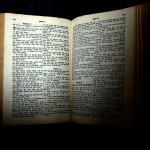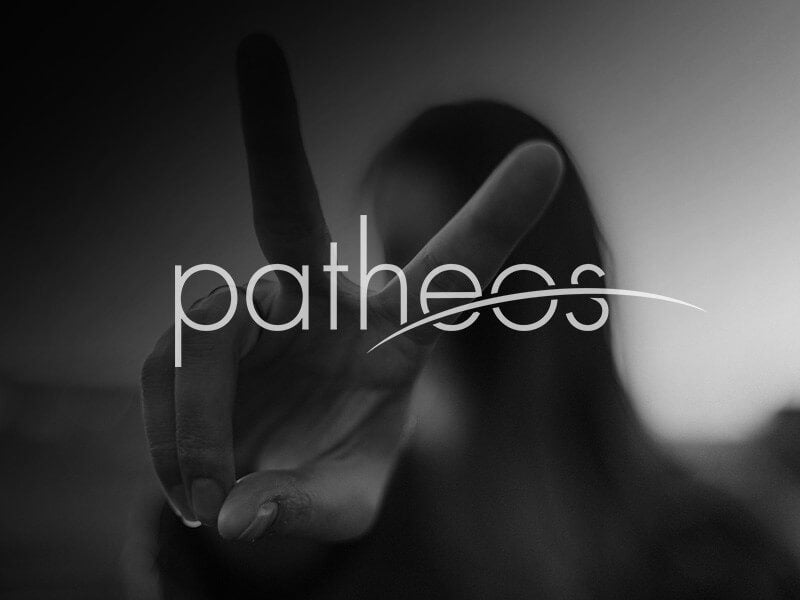Prior post on gospels, with link to series intro.
1. Of the four canonical gospels, John was probably written last, in stages, over the end of the first century and beginning decades of the second century. By that time, Jesus still had not returned, as it was expected that he would soon (1 John 2:18, 28), and the Beloved Disciple appears to have died when chapter 21 was written/added in the final stage (John 21:23; compare D&C 7).
2. Scholars associated with the German school of the history of religions theorized that the figure of Jesus as descending and ascending redeemer was based on a pre-Christian eastern pagan gnostic myth which these scholars reconstructed/invented primarily from late Mandaean and Manichean literature. Just as the theory was more or less discredited, among the Nag Hammadi codices ‘stupendous parallels’ to the Johannine prologue were found in an early Christian(ized?) text entitled First-thought in Three Forms, which describes the descent of the Word and seems to polemicize against Johannine Christianity. Debate continues (or has stymied) as to the relationship between these texts and another text from the same codices, the so-called Hymn of Forethought, recounting the descents and ascents of a redeemer figure, at the end of the long manuscripts of the Apocryphon of John.
3. Even if the people who wrote the fourth gospel did not know the synoptic gospels in their written form, they knew at least some similar traditions, which they seem to react to and rewrite in places.
4. Aside from Simon Peter’s patronymic, the only John mentioned in the text is John the Baptist (compare D&C 93:4-18 and this post), who is portrayed as fully recognizing Jesus, unlike in the synoptics. In Mark, the Baptist does not seem to recognize Jesus at his baptism or thereafter. In Matthew and Luke’s common source (Q), after the baptism he specifically asks Jesus whether he is the one (Matt 11:2-6 // Luke 7:18-23). This, despite the fact that in Matthew, according to the apologetic explanation for Jesus’ baptism, the Baptist had already recognized him (Matt 3:14-15; compare 2 Nephi 31:5-7); and despite the fact that in Luke, according to the infancy narrative there, the Baptist or at least his mother had recognized Jesus even before he was born (Luke 1:39-44). In John, not only is the Baptist sent by God (1:6-8), like the divine Word, but lesser than it, he recognizes Jesus at the baptism (1:29-34), contributes the very first disciples to Jesus’ movement, namely Andrew and perhaps the Beloved Disciple himself (1:35-37), and the Baptist defers to Jesus when his remaining disciples become envious of Jesus’ success (3:26-30).
5. Unlike in the synoptics, Jesus does not institute the sacrament on the evening of the betrayal in chapter 13. There is no (new) covenant/testament here. If the bread and wine are alluded to, it is in chapter 6.
6. Unlike in the synoptics, Jesus does not eat the Passover meal with the disciples on the evening of the betrayal either. Passover does not begin on Thursday. It begins on Friday, the day of the crucifixion in chapter 19, with Jesus as the l/Lamb, and to make a theological point.
7. The new commandment to love one another (14:34) does not necessarily support the idea, however pleasant, that Jesus loved and accepted everybody, and that his disciples did and should do the same. In chapter 8, the Johannine Jesus also tells people who disagree with him that they are worldly (8:23) diabolical (8:44) liars (8:55). And at least one member of the rather sectarian Johannine community says (1 John 2:15): “Do not love the world or the things in the world ….” Far from loving and accepting everyone, he naturally claims that he and his constituents are children of God like Jesus, as opposed to non/ex-community members who are children of the devil (1 John 3:1-10). The same or another member of the Johannine community warns against admitting and welcoming teachers with beliefs about Jesus that are different from his own (2 John 10-11), “for to welcome is to participate in the evil deeds of such a person.”
8. And yet, as cosmic savior, the Johannine Jesus atones for the sin of the world (1:29); God loves the world and sends Jesus to save it (3:16-17); Jesus dies for all the children of God, not only the Jewish nation (11:52) or the limited ‘many,’ for whom the blood of the (new) covenant/testament is poured out in Mark and Matthew.
9. But, unlike in the synoptics, Jesus does not suffer in the garden in chapter 18. This is apparently not a matter of the Johannine record being silent but a reaction to and rewriting of tradition. Whereas Jesus asks for the cup to be removed from him in his prayer to the Father in the synoptics, he does not pray at all in any moment of weakness in chapter 18. Instead, telling Peter to put his sword away, he says (18:11), “Am I not to drink the cup that the Father has given me?” And earlier, in chapter 12, though troubled, he says (12:27), “And what should I say—‘Father, save me from this hour’? No, it is for this reason that I have come to this hour” (compare D&C 19:18). In fact the portrayal of Jesus in general is surprisingly, some have said even naively, not human.
10. As a final tidbit, unlike in the synoptics, Jesus carries the cross by himself in chapter 19. There is no question of him needing help from any Simon of Cyrene, or question of the divine entity that possessed him at his baptism now leaving its host, as some (later) Christians believed.











